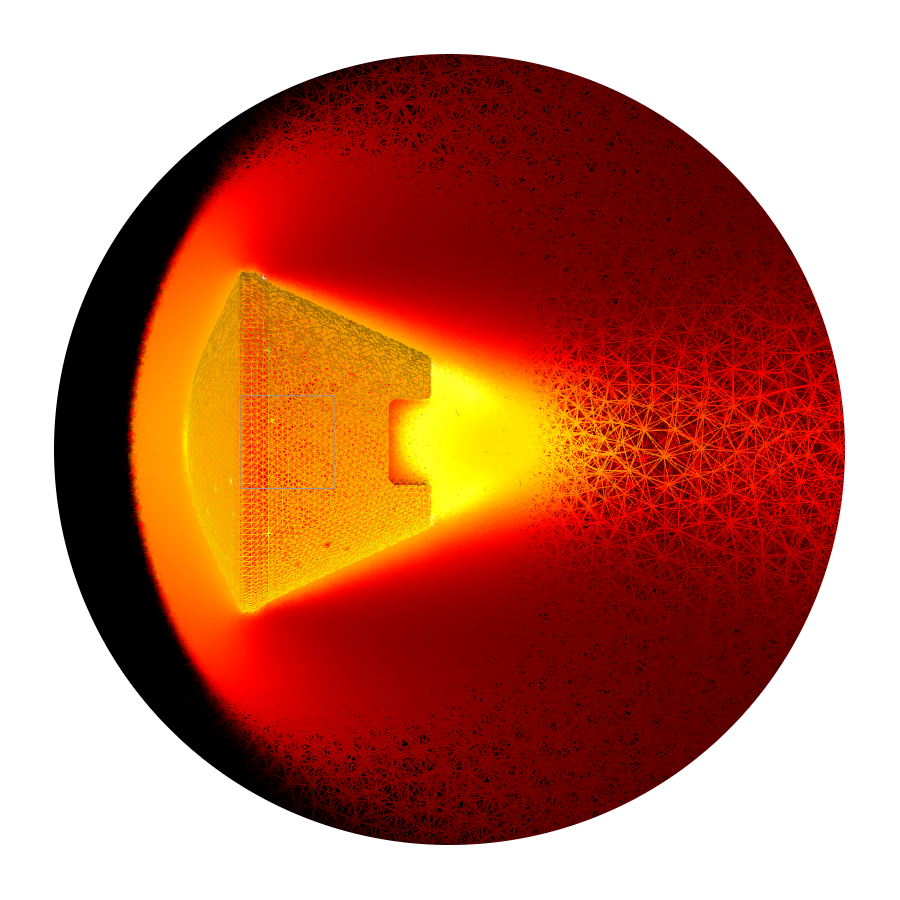Online Mesh Generator with R Systems and Xplicit Computing
An Excellent Mesh Can Transform Your Process!
Automatically create high-quality volumetric tetrahedral meshes for FEA & CFD with only a few clicks! It’s powerful, robust, and satisfying!
Export to GMSH, CSV, STL, or Paraview.
Implicit meshing process on the infamous Stanford bunny: a) Shape is defined by surfaces used to solve signed distance field (SDF) background. b) Nodes are injected and equalized. c) Triangulation updates topology with over-wrapped mesh. d) Elements are evaluated and cleaned while surfaces are unwrapped. e) Original mesh superimposed over new mesh to visualize spatial deviation. f) final mesh is highly locally-isotropic, with effective volume utilization for high conformance.
Leverage massive parallelization for compute and render, enabling real-time results! Share, reuse, and build upon your systems and algorithms with multi-fidelity simulation! Custom size functions define relative sizes between surface and interior cells. Adaptive and refinement algorithms can be defined …
Sign-up Today
Receive $100 in Compute Credits and other exclusive offers by completing the form below.

How It Works
- Upload your STL file to start the process. Your file will be quickly scanned for size, etc.
- Specify the desired number of nodes, the level of detail, and refinement parameters.
- A processing time estimate will be generated, providing you an immediate price quote.
- Submit your job. Shape is reinterpreted and nodes are injected to interior or exterior regions.
- Elements are successively equalized and triangulated, yielding highly-computable tetrahedral meshes.
Strengths
- Complex or irregular domains such as triply-periodic structures for additive manufacture.
- Efficient unstructured volume utilization while maintaining high element quality.
- Fast unimodal element quality distributions in seconds or minutes.
- Self-healing SDF; watertight not required!
Limitations
- Proportionally-thin components with small wall thickness require increased background resolution, less efficient utilization.
- Currently quasi-isotropic tets only. Prism layers and hexcore coming soon.
